Contents
- 1Why you should visit Rottnest Island
- 2Rottnest Island History
- 2.1Aboriginal History
- 2.2Military History
- 2.3Maritime History
- 3Rottnest Land Wildlife
- 3.1Quokkas
- 3.1.1Where to find Quokkas
- 3.1.2How to get a Quokka selfie
- 3.2Birdlife
- 3.3Reptile life
- 4Rottnest Marine Life
- 4.1New Zealand Fur Seals
- 4.2Dolphins
- 4.3Humpback Whales
- 5How to get to Rottnest Island
- 5.1By Ferry
- 5.1.1From Perth
- 5.1.2From Freemantle
- 5.2By Air
- 6How to get around on Rottnest Island
- 7Tips to plan your Rottnest Island day trip
- 8Rottnest Island Accommodation
- 8.1Discovery Rottnest Island
- 8.2Karma Rottnest
- 8.3Rottnest Island Authority
Rottnest Island has become somewhat famous in recent years, thanks largely to an adorable little mammal and a few celebrity selfies!
It would be easy to assume that seeing the Quokka is the only thing to do on Rottnest Island, I had made the same assumption after all. But there’s actually way more to this little island off the coast and a Rottnest day trip should be on the itinerary for any visitor to Western Australia. There’s so much to do in fact, you may even like to consider staying on the island!
Rottnest Island covers an area of 19 square kilometres and is located 18 kilometres from the Western Australian city of Freemantle. The island is an A-class reserve, which provides it the highest level of protection for public land. It is administered by the Department of Biodiversity, Conservation and Attractions under a separate act of parliament. The island has a resident population of around 300 people and is a prime tourist attraction. Visitors can choose to stay in a number of locations on the island.
This post contains affiliate links. Making a purchase through these links earns a small commission at no additional cost to you and is a great way to show your support for this site.
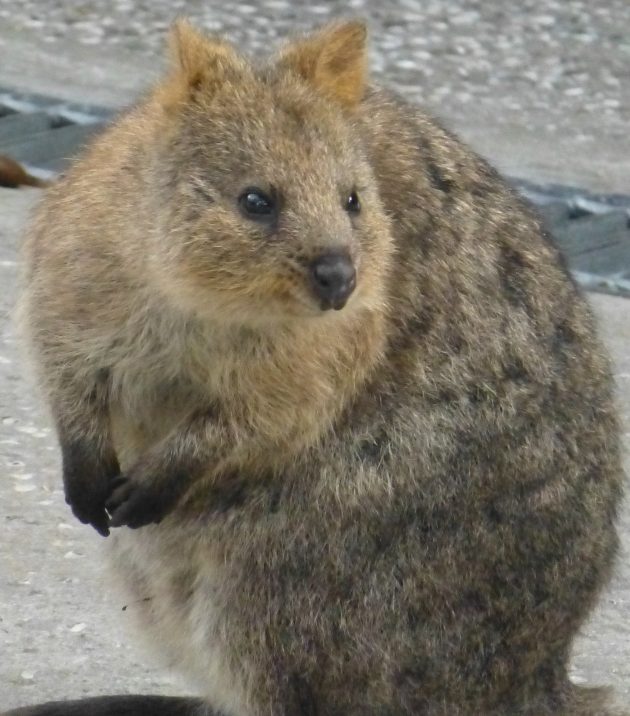
Why you should visit Rottnest Island
There’s more to Rottnest;
- Colonial history; there are a number of structures which remain the way they were built over 150 years ago
- Aboriginal history; the island has a dark and unfortunate history of Aboriginal mistreatment
- Military history; activities pertaining to both world wars occurred on the island
- Spectacular scenery; marine, woodland, beaches, there is plenty to thrill the nature lover
- Wildlife; its not all about the Quokkas!
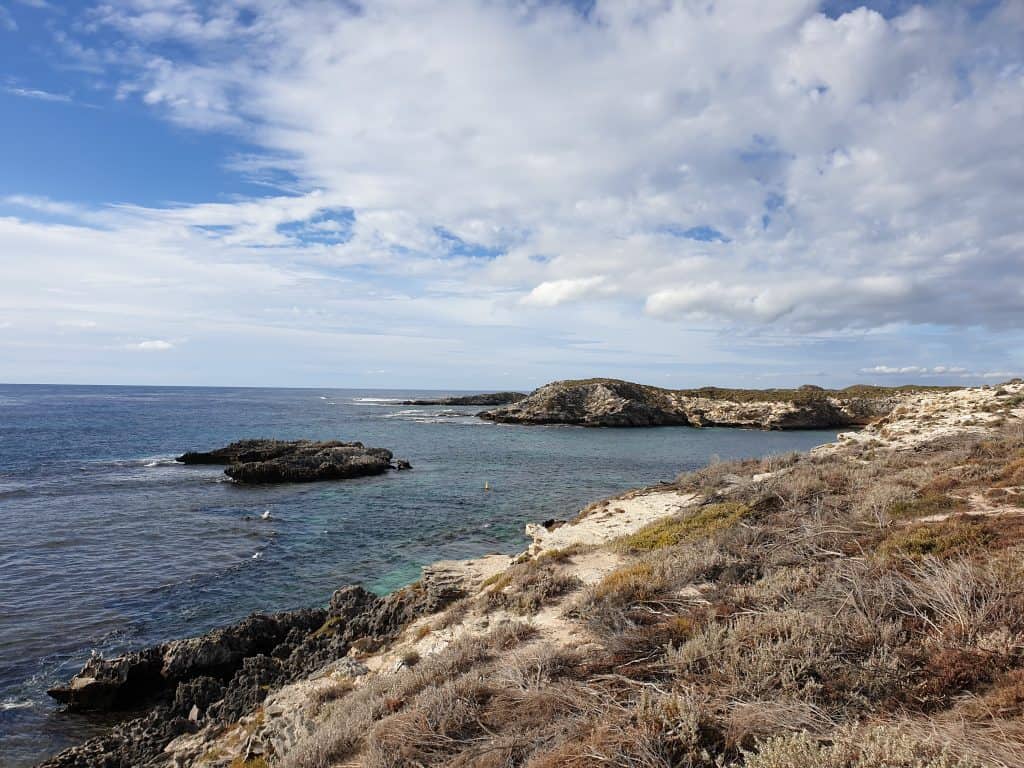
Rottnest Island History
Rottnest Island separated from mainland Australia approximately 7000 years ago due to rising sea levels. Known as Wadjemup to the local Whadjuk Noongar people, artefacts dating back over 30,000 years have been found on the island, however there is no evidence to suggest they continued to inhabit the island after it separated from the mainland.
The name Rottnest comes from the Dutch, who named it ‘Rats Nest Island’ in 1696 after mistaking the resident Quokka population for rats. It was colonised by British settlers in 1829, thought to offer potential for salt harvest, farming and fishing. It has been a penal colony for Aboriginal people, a military installation and an internment camp for enemy aliens. Many of the buildings still present on the island were built during the colonial period.
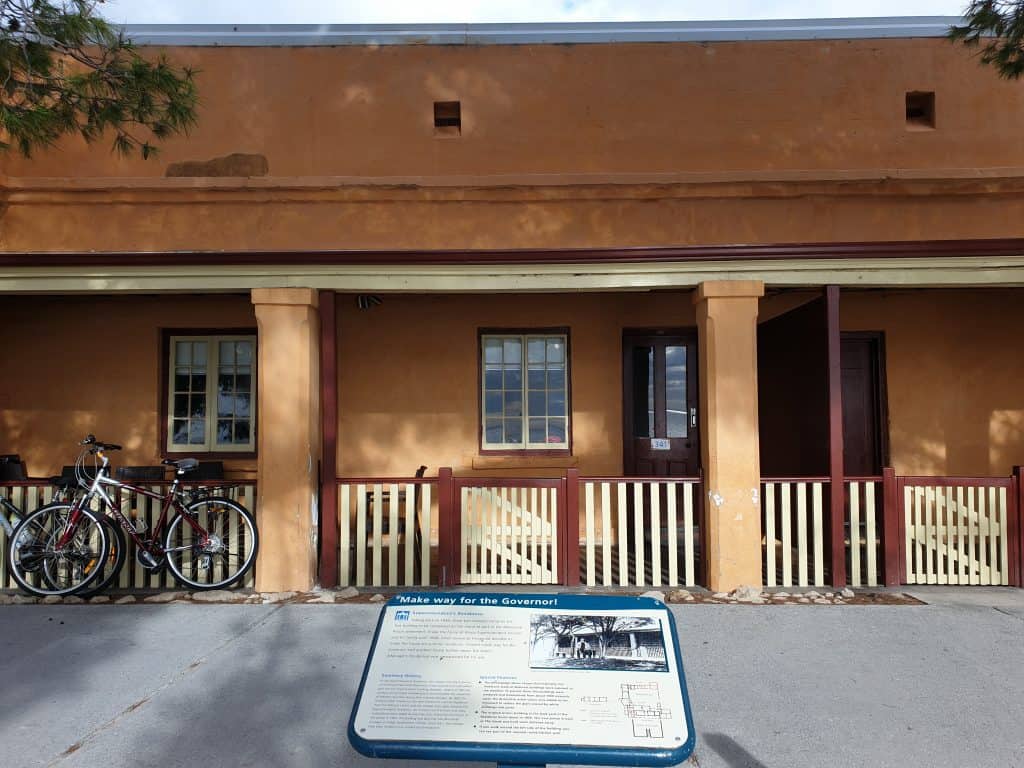
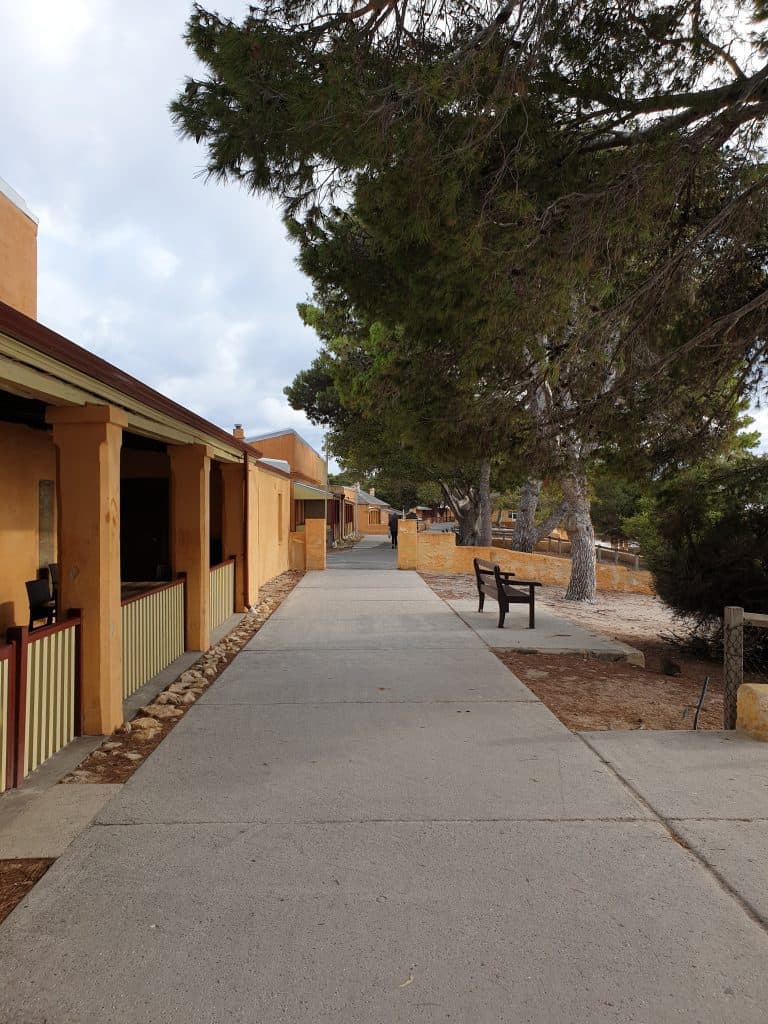
Aboriginal History
The Aboriginal name for Rottnest Island, Wadjemup, means; place across the water where the spirits are. Prior to the island’s separation from the mainland it was an important meeting place and ceremonial site. Today it is known as the resting place of the spirits and a place of stopover on the journey to the afterlife. There are 17 Aboriginal heritage sites on the island and the island continues to be of significance to the Aboriginal community due to being the largest known burial ground of Aboriginal people.
After the British colonisation of the mainland, conflict frequently ensued between Aboriginals and the settlers granted parcels of land, and according to Dr Glen Stasiuk, Rottnest Island was originally intended to be a place where the Aboriginals could be sent and move freely rather than be incarcerated on the mainland. In 1838 the first 10 Aboriginal prisoners arrived on the island and they had some freedoms initially, until the arrival of the brutal Henry Vincent as Superintendent. The island was formally made a penal settlement in 1839, which it continued to be until 1904. During these years it is believed around 370 Aboriginal prisoners died, Rottnest Island has the dubious honour of being the largest death in custody site in Australia. While this was mostly as a result of disease, records indicate 5 were hanged.
Aboriginal prisoners were forced to quarry the materials and construct many of the buildings on the island.
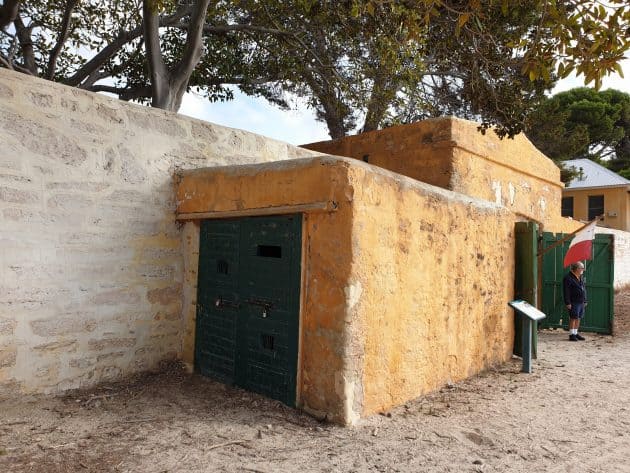
A building known as The Quod housed the prisoners, which was completed in 1864. This was the second prison to be built on the island, after the first had been destroyed by fire. Construction was mainly carried out by the prisoners using limestone blocks from a quarry on the island.
The Quod was notorious for its terrible conditions. The 2x3m cells were at times occupied by five prisoners who slept on the floor with just a thin blanket for warmth. Cells had no furniture, windows or sanitation and disease spread quickly.
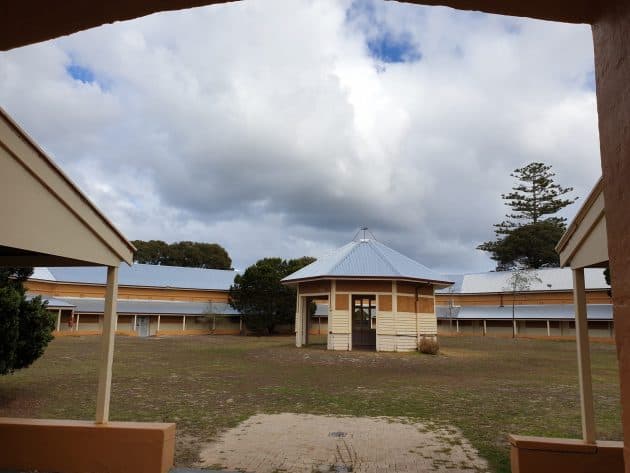
Aboriginal prisoners also built the town chapel in 1860, which later served as a school during the day and a reading room at night.
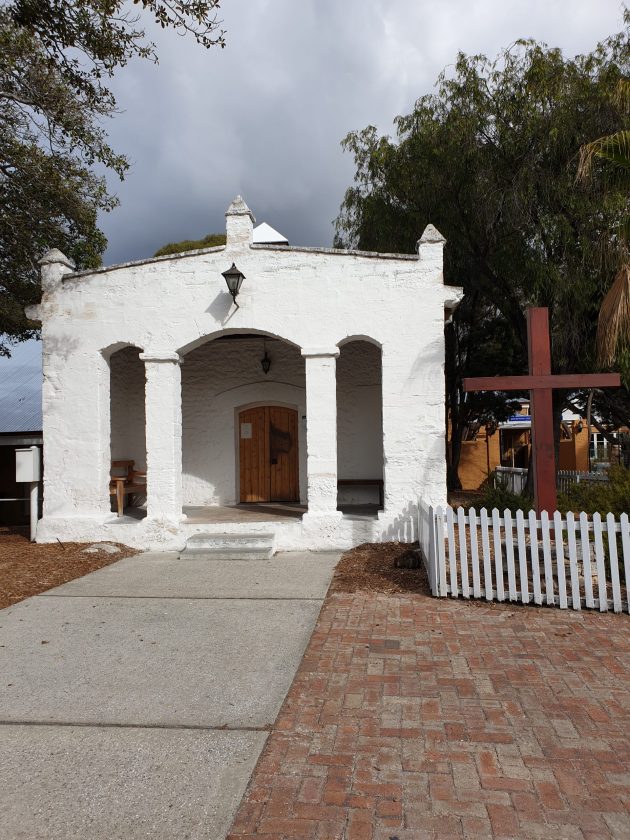
Military History
Rottnest Island had a part to play in both World Wars. During 1914 and 1915 it was used as an internment and camp for Prisoners of War. In September 2015, 989 people were held there, 148 of which were Prisoners of War.
The island was deemed critical to the defence of Freemantle as it could engage hostile ships before they came into range of the mainland port. In 1934 the Commonwealth purchased land at Bickley and began construction on the Oliver Hill and Bickley Battery’s, guns and quarters at Bickley, Army Barracks at Kingstown and a fortress, command post and signal station at Signal Ridge. A railway was built from the jetty to the guns at Oliver Hill. The Barracks were completed in 1937 and Rottnest Island was declared a permanent station for troops.
Recreational use of the island was not permitted between 1940 and 1945 and Rottnest Island was exclusively a military location. After the war Kingstown Barracks were used as a training location and they were retained even after other Army land holdings were returned in 1967. The Army officially vacated the island in 1984 and the Barracks became an educational centre.
You are able to visit and tour the military installations on the island, including riding the railway at Oliver Hill.
Maritime History
Europeans were most likely to have been the first to land on the island with the Dutch in 1658, while searching for the survivors of another ship. William de Vlamingh was next recorded in 1696 and gave the island its name.
In excess of 13 ships lie in watery graves in the waters of Rottnest Island. Their locations are indicated by plaques on the shore.
Between 1848 and 1903 a Pilot station operated on the island. Pilots guided ships around the reefs and into Freemantle Harbour. A replica whaleboat like one they used is on display in the pilot boathouse near the main settlement.
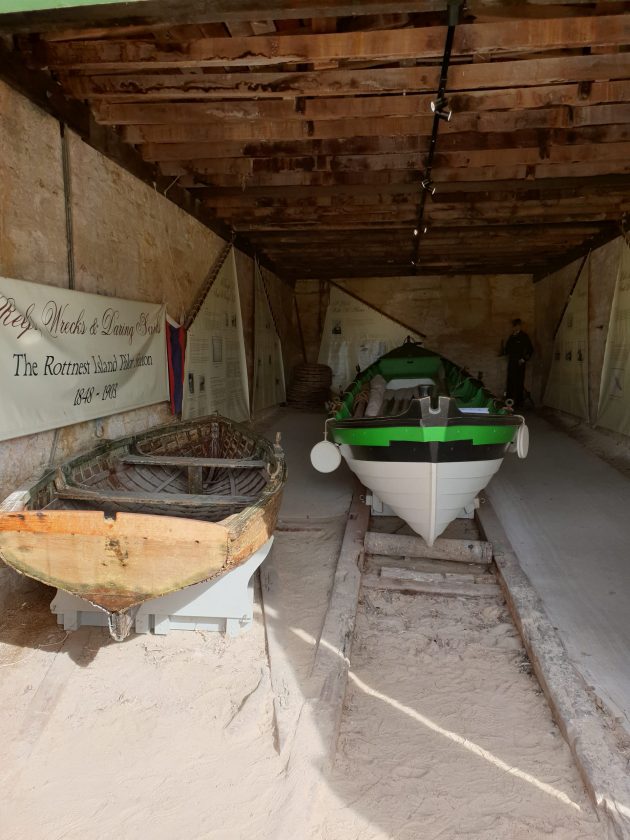
Lighthouses served to provide a communication link between the Pilot station and incoming ships, and after the last pilot departed the island in 1903 the lighthouse would telephone ship sightings to the lighthouse in Freemantle and a pilot boat would dispatch from there.
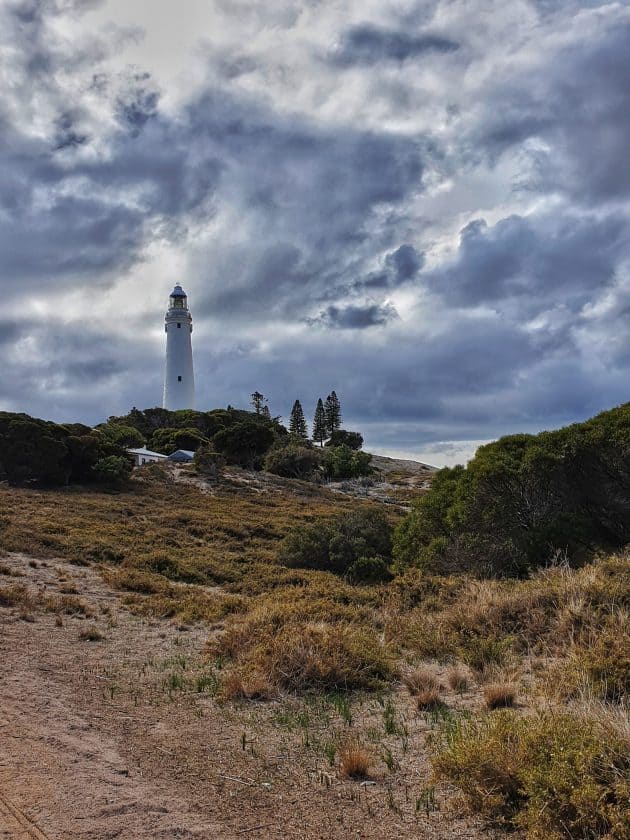
The original Rottnest Island Lighthouse served for forty years until 1891, when plans for a replacement lighthouse were drawn up that would be 15 metres west of the original tower. The new lighthouse was opened in 1896 and is still an integral part of Australia’s navigation network encircling the coastline. The Rottnest Island Lighthouse stands 38 metres high and the lens revolves once every 60 seconds at an intensity of 1,300,000 candelas. The geographical range of the light is 23 nautical miles.
Tours of the lighthouse run daily, the view from the top is worth the climb.
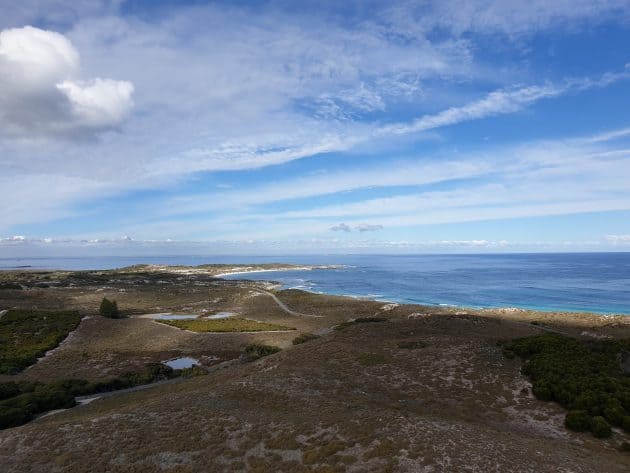
Rottnest Land Wildlife
Quokkas
Undoubtedly the star of the show are the ridiculously cute Quokkas that earned Rottnest Island its name, observed to resemble a rat the size of a cat. They are also known as the short-tailed scrub wallaby, and are the only member of the genus Setonix.
The Quokka is the only mammal native to Rottnest Island which has a population of between 10,000 and 12,000. Having no predator on the island they have flourished there while they have disappeared in the wild on the mainland. They are listed as a vulnerable species.
Where to find Quokkas
The Quokkas can be found all over the island, but their population is densest near the main settlement due to the accessibility of fresh water and food.
You honestly won’t have to try too hard to find them, just walk through the settlement and you’ll come across them. Or even sit down for a meal and you may find a couple at your feet!
How to get a Quokka selfie
Again this isn’t terribly hard, but be prepared to get down on the ground!
The Quokkas are utterly unconcerned by people, so they aren’t going to run away. Chances are you will sit or lie down next to one and they’ll keep on doing what they are doing.
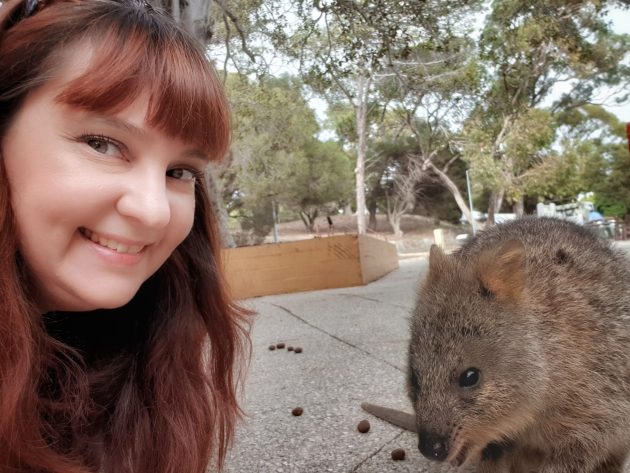
I was able to get one of mine by sitting in front of a wall that the Quokka was walking along, and offering it a leaf to make it stop behind me.
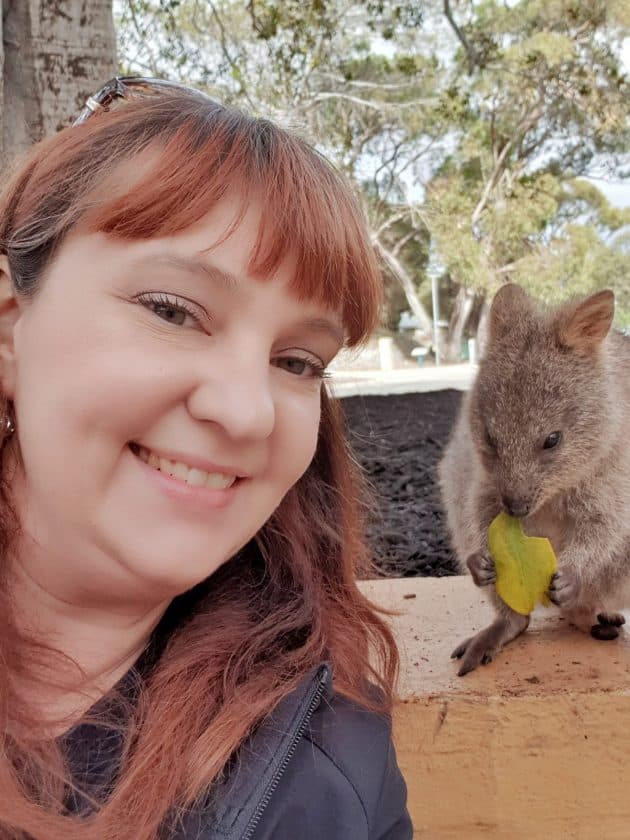
They can carry Salmonella, which is harmful to people so don’t touch them. Human food can also make them quite ill so don’t feed them.
Birdlife
The habitat and coastline of Rottnest Island offer food and a breeding habitat for up to 50 shorebird species, including osprey, gulls, terns, cormorants and parrots. It also supports breeding colonies of wedge-tailed shearwaters.
Stop on by the Rottnest Island visitor centre and pick up a map of the habitats if you are keen for some bird watching!
Reptile life
Some species of turtle are occasionally seen in the water off the coast. The island is home to 3 species of frog, 17 species of lizard and 2 species of snake, one of which is venomous.
Rottnest Marine Life
Rottnest Island is a Marine Reserve with a range of habitats and animals. Strict regulations apply to interactions with flora and fauna.
Along with being home to approximately 400 species of fish, 20 species of coral, a number of species of crustacean and the famous Western rock Lobster which you might try at the local restaurant. There are a number of popular snorkeling spots on the island and snorkel sets can be hired behind Hotel Rottnest.
New Zealand Fur Seals
There is a resident New Zealand Fur Seal colony at Cathedral Rocks. From a vantage point on the viewing platform you may be lucky enough to see them enjoying the sun on the rock or splashing about in the water.
Take the proper camera for this one, the phone probably isn’t going to pick much up from the distance. I’d also plan to head to this spot earlier in the day. While the afternoon sun on the water is stunning, it makes it difficult to see much.

Dolphins
Head on over to Salmon Bay on the North side of the island to see if you’re lucky enough to spot a pod of Bottlenose Dolphins.
Humpback Whales
In Winter Rottnest Island is along the Humpback Whale Migration route that runs past the Western side of Australia to warmer waters. Watch for whales from land between May and October at Cape Vlamingh.
How to get to Rottnest Island
As Rottnest Island is completely separate from the mainland, the only way to access it is by air or by sea.
By Ferry
Ferries are available from both Perth and Freemantle and are available as a basic transfer or packaged with other activities on the island. Ferry transfer prices also include the AU$18.50 admission pass to the island.
From Perth
Rottnest Fast Ferries depart twice daily from Hilary’s boat harbour, at 7.30am and 10am. I would recommend the 7.30am because it is so easy to spend an entire day on the island and still not see everything, the return ferry leaves at 4.30pm. The trip over takes 45 minutes.
Your ticket also includes a complimentary transfer from your hotel, great if you don’t have a vehicle to take advantage of the free parking at the boat harbour.
They also make a pretty decent coffee while you wait!

From Freemantle
Sealink Rottnest Island run ferries at three departure times, with the first at 8am. The journey from Freemantle is 35 minutes.
By Air
For a little more flexibility on times check out a seaplane flight with Swan River Seaplanes, including transfers from Perth CBD hotels.
How to get around on Rottnest Island
If you happen to like cycling you can head to Hotel Rottnest and hire a bike for the day.
If like me, bikes aren’t your thing head to the Visitor Centre and get a ticket for the Island Explorer bus. Your ticket is valid all day and you can hop on and off as you wish. Just be sure to be on the last bus back to the settlement if you have a ticket on the ferry back!
The island is full of walking trails so there are plenty of walks you can do between stops.
Tips to plan your Rottnest Island day trip
There really is so much to do on the island that it is deceptive how long it can take. If you are just planning to do a Rottnest day trip check out the tours available on the official site and get an idea of where you’d like to prioritise your time. I underestimated how long things would take and was still at the main settlement at lunchtime, leaving me precious little time to check out the rest of the island.
Accommodation is available on the island if you are keen to take your time.
Be sure to stop by the Rottnest Island general store for some cute Rottnest themed souvenirs, and be sure to try the locally sourced fresh seafood!
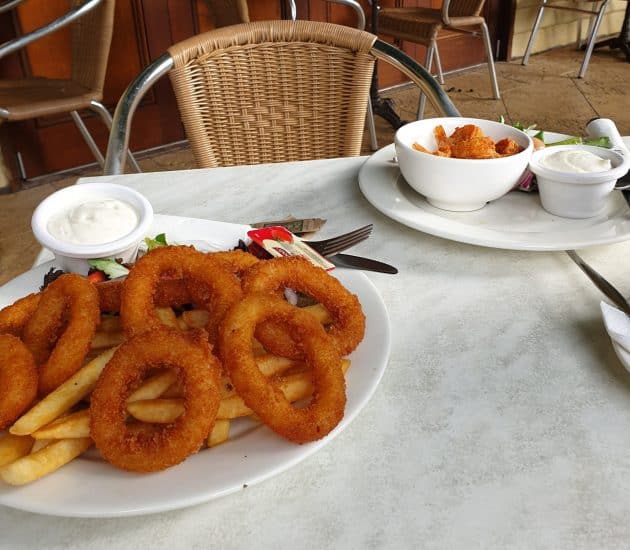
Rottnest Island Accommodation
If you’ve had a look and decided you need more than just a day to explore Rottnest Island, you have a few options available for accommodation.
Discovery Rottnest Island
For those seeking the creature comforts of luxury hotels, combined with closeness to nature, check out the Discovery Rottnest Island eco-resort for the ultimate glamping experience almost on the beach. Discovery Rottnest Island features a range of options to suit varying budgets plus a pool, restaurant and bar.
Book your stay at Discovery Rottnest Island
Karma Rottnest
Karma Rottnest offers premier style heritage listed accommodation featuring a pool, a la carte restaurant and 2 bars and is suitable for families and solo travellers.
Book your stay at Karma Rottnest
Rottnest Island Authority
The Rottnest Island Authority offers several villa’s and dormitory accommodation for the budget conscious travellers.
Book with Rottnest Island Authority
I hope you enjoyed this glimpse into the fabulous place Rottnest Island is!
If you liked it please share!
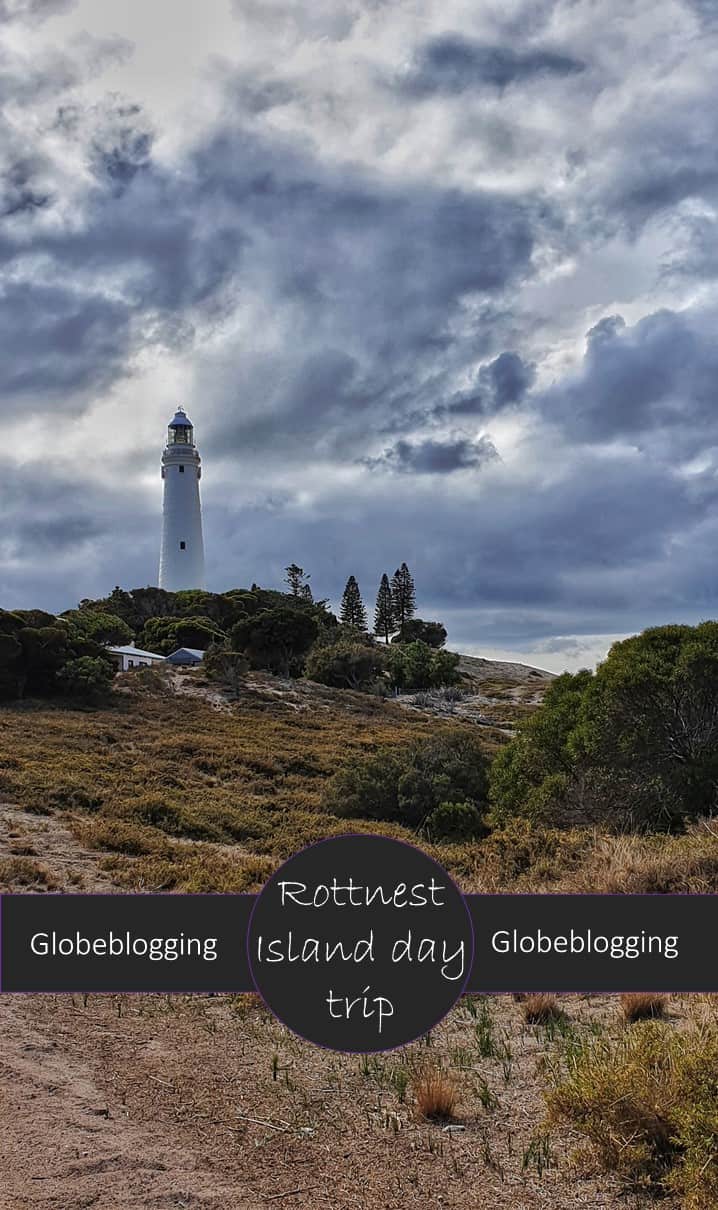
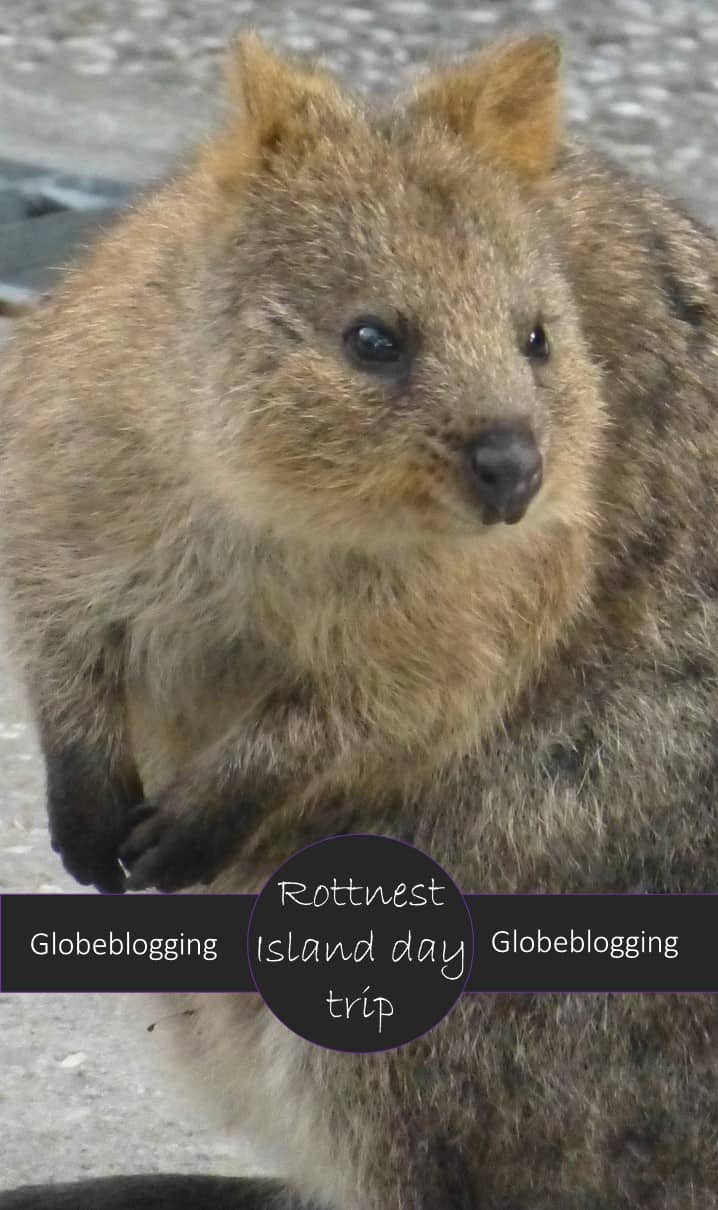
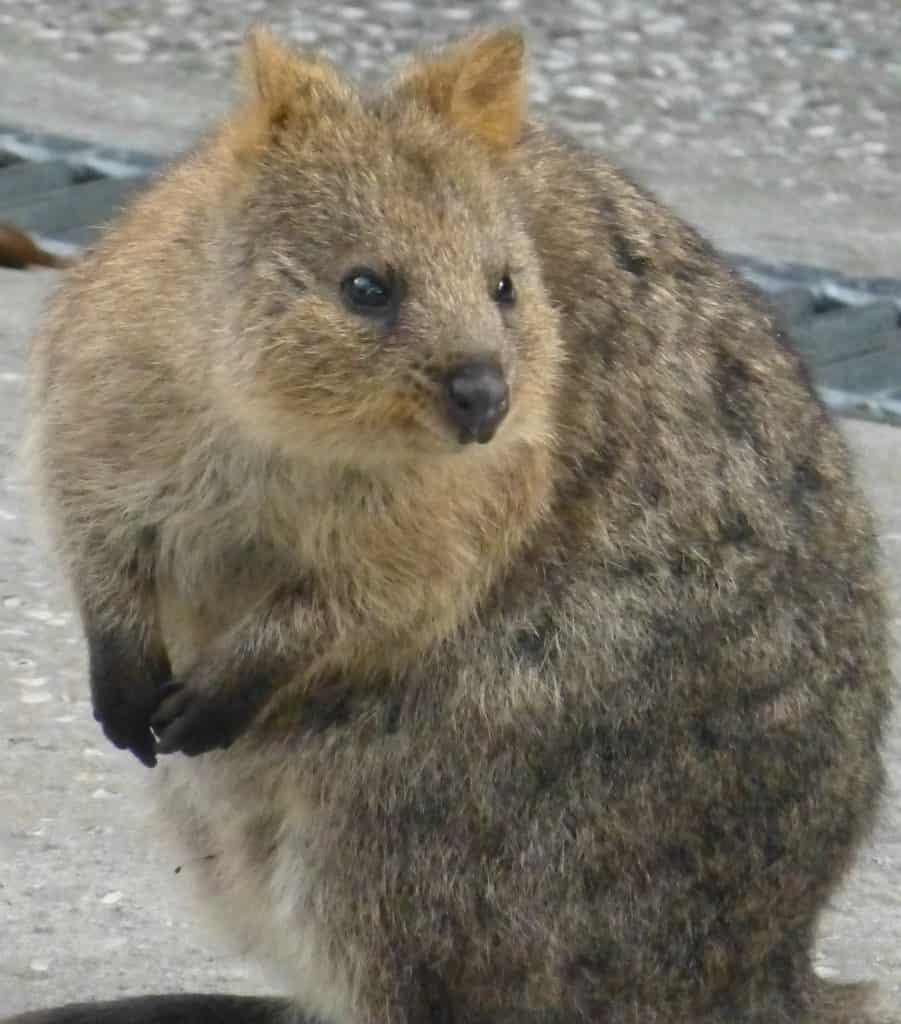

Rottnest Island is on my bucket list. I am definitely having a self with a Quokka when I get there.
I had never heard of these adorable creatures! They remind me a wee bit of the Dassie in Africa, though they would probably steal your lunch and not pose for a selfie. Sounds like tons of fun!
I’ve heard so much about Rottnest Island and I’d love to explore it and of course to take a selfie with a quokka! Beautiful post.
This was one of my highlights when I visited Australia. Love those quokkas!
Fabulous post. It makes me want to go back and see all the things I missed! We did a day trip and did a couple of hikes and of course saw plenty of quokkas and a couple of huge rays in the water right by the jetty.
Being a born and bred Perth Girl, Rottnest Island was a place we went several times a year. I remember the crossings as if it was yesterday. One time we all went for Fathers Day and boy it was rough. The ship loped from side to side and a quite a few were sea sick. The last time I went was a few years ago (I now live in Victoria) and I had the best day.
Those critters are cute. And I’d love to look for the seals, dolphins, and whales too. What an interesting place. There’s just something magical about the remoteness of an island. Thanks
Really informative post. Really looking forward to a day trip to Rottnest Island